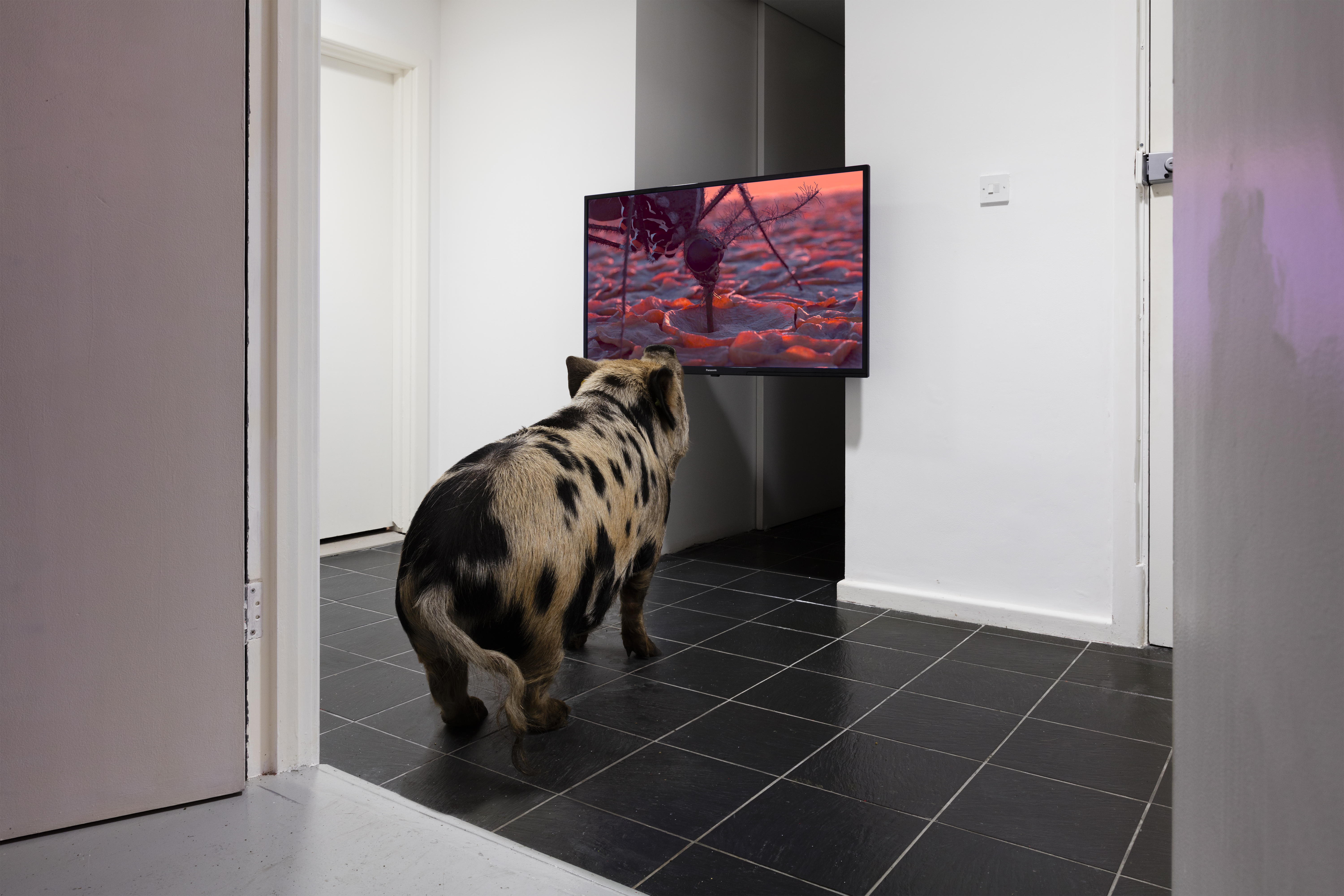
In 2007, Andrew Norman Wilson landed a job as a videographer subcontracted to Google. He edited footage of campus speakers, produced video “content” for the firm, and made full use of campus amenities from nap pods to conference bikes. But Wilson noticed that one class of employee—those wearing yellow ID badges—didn’t have the same privileges as the others. While he savored chef-driven meals and frolicked in ball pits, these so-called Scan-Ops workers digitized thousands of books, page by page, for the controversial Google Books archive, then went home. Every day at the same time they would exit their secretive building en masse. One day, Wilson filmed them leaving.
The video got Wilson fired, but the work he made with the footage, released in 2011 as Workers Leaving the Googleplex, went viral. In the piece, as Wilson’s voice-over recalls his time at Google, shots of badged workers and bland buildings echo the Lumiére brothers’ famous 1895 film of workers leaving their film factory in Paris; Googleplex joined projects by Allan Sekula and Haroun Farocki to update this filmic study for the digital age.
For the next few years, Wilson’s work trafficked in the aesthetics of corporate America and management culture. He founded a startup, SONE (2013-2015), to produce stock footage of things like smoke coming from ATMs, color coordinated to each bank’s brand. But such projects started to feel, in his words, “too air tight.”
This project led to a visceral exploration of CGI. Ode to Seekers 2012, (2016) features a hairy mosquito pumping blood from a desert-like landscape of skin. The insect becomes an oil derrick, then a syringe—all plunging and pumping to a glitchy beat. For The Unthinkable Bygone (2016), Wilson hired a graphic artist who specializes in realistic animations for the medical industry to build a character from the Dinosaurs sitcom. The diapered reptile is cut in two; its bottom half is ringed like a cutaway model of the Earth, playing on how CGI creations appear hollow, and are actually flat. The camera gruesomely travels in and out of the digital puppet’s “skin.”

Indeed, much of Wilson’s work pries at technology’s smooth shells—not to debunk, but to complicate its mysteries. “I use scientific modeling for impressionistic and illusory ends,” says Wilson—although, he adds, he has faith in the scientific process. He might say the same of structures in general. Ode to Seekers, 2012, is exhibited in a room-within-a-room, ideally made of concrete and rebar; the inside is seamless, but the outside displays the backs and wires of the projector and speakers. In October, a similar (wooden) structure will occupy the old movie theater at Human Resources, a Los Angeles gallery. He is presently fundraising for a mobile, “parasitical” enclosed cinema called This Light, designed to visit patrons’ backyards.
His newest video work, commissioned by the Künstlerhaus Stuttgart (where he will have a show in November) and with a script written in collaboration with filmmaker James N. Kienitz Wilkins, returns to corporate themes. Like Googleplex, the project is autobiographical at its core, centering on a speculative depiction of the artist’s father who was an engineer at Kodak for decades, then lost his job as the firm went bankrupt. The as-yet-untitled piece occupies the dreamlike space not of Kodak’s production line, but of the memories and fantasies its products promise, and never quite capture.



